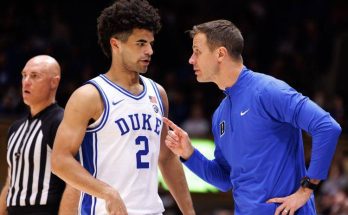The NCAA tournament is often a stage where dreams are both made and shattered, where the finest moments in college basketball are played out with intensity, passion, and heartbreak. This year, the South Carolina Gamecocks entered the tournament carrying a blend of hope, determination, and the weight of expectation. However, their journey came to an end at the hands of UCLA, a team known for its rich basketball heritage and ability to rise under pressure. The elimination of the Gamecocks by UCLA was not merely a result of a single game but the culmination of various factors including strategy, execution, mental toughness, and the sheer unpredictability that defines March Madness.
South Carolina, coming into the tournament with a strong season record, had high aspirations. The team, led by a talented roster and a coaching staff adept at navigating the complexities of college basketball, had earned their place through hard-fought victories and a display of resilience. Their playing style was marked by aggressive defense, a balanced offensive attack, and an ability to adapt to different opponents. Throughout the regular season and conference play, they demonstrated they could compete with some of the best teams in the nation. Yet, the NCAA tournament is a different animal, a pressure cooker where one off night or a momentary lapse can end the dream.
UCLA, on the other hand, came into the matchup with a legacy that carried weight and expectation. The Bruins, a team with a storied history and multiple national championships, brought a combination of youthful energy and experienced leadership. Their style of play was characterized by disciplined execution, a focus on perimeter shooting, and a tenacious defensive presence. UCLA’s path to facing South Carolina was paved with strong performances and a belief that they could extend their run in the tournament. The Bruins’ ability to handle pressure and make clutch plays became a defining feature of their tournament campaign.
The game itself was a tightly contested battle, reflective of the stakes and the talent on both sides. From the opening tip, it was clear that both teams were determined to impose their will. South Carolina sought to leverage their physicality and defensive intensity to disrupt UCLA’s rhythm. They pushed the pace at times, attempting to catch the Bruins off guard with quick transitions and smart ball movement. However, UCLA’s experience and composure allowed them to weather these attempts and maintain control. The Bruins employed a disciplined approach on offense, carefully setting up plays that took advantage of South Carolina’s defensive tendencies. Their ability to hit critical shots from beyond the arc and convert key possessions under pressure proved pivotal.
One of the critical factors that shaped the outcome was the battle in the paint and on the boards. South Carolina’s frontcourt players fought valiantly to secure rebounds and protect the basket, but UCLA’s size and positioning gave them an edge. Second-chance points and offensive rebounds created additional scoring opportunities for the Bruins, slowly tilting the momentum in their favor. The physicality in the paint also influenced foul trouble, affecting rotation decisions and limiting South Carolina’s flexibility on defense.
On the perimeter, both teams showcased impressive shooting, but UCLA’s ability to hit timely three-pointers was a difference-maker. The Bruins’ shooters, confident and aggressive, found gaps in South Carolina’s defense, sinking shots that kept their team ahead in the critical moments of the game. South Carolina, meanwhile, faced challenges with consistency in their shooting. Despite flashes of brilliance from their guards and wings, their offense occasionally stalled, leading to missed opportunities that UCLA capitalized on.
Turnovers and ball security also played a significant role in the final result. South Carolina, under the immense pressure of the tournament atmosphere and UCLA’s relentless defense, committed a few costly turnovers. These miscues translated into fast-break points for the Bruins, increasing their lead and putting additional pressure on the Gamecocks to respond quickly. The psychological impact of these moments cannot be overstated, as the momentum in tournament games can swing rapidly, and the ability to stay composed is crucial.
Coaching strategies and in-game adjustments were equally important. South Carolina’s coaching staff tried various defensive looks and offensive sets to counter UCLA’s strengths. They aimed to disrupt the Bruins’ rhythm by mixing man-to-man coverage with zone defenses and by encouraging aggressive closeouts on shooters. However, UCLA’s preparation and adaptability allowed them to respond effectively to these adjustments. Their coach’s experience in high-pressure situations showed in the way the team managed the clock, chose shots wisely, and maintained defensive discipline when it mattered most.
The emotional and psychological aspects of the game also contributed to South Carolina’s elimination. The intensity of the NCAA tournament can magnify every play, every decision, and every mistake. South Carolina’s players showed grit and determination throughout the game, but as the final minutes ticked away, the pressure mounted. UCLA’s players, fueled by their desire to extend their tournament run and respect their program’s legacy, played with a level of confidence and poise that made the difference. The ability to perform under such circumstances often separates winners from losers in March Madness.
Reflecting on the loss, it is important to recognize the accomplishments of the South Carolina team. Reaching the NCAA tournament is a testament to their hard work, talent, and commitment throughout the season. The experience gained from competing on such a grand stage will be invaluable for the players and coaching staff moving forward. While the elimination is undoubtedly disappointing, it serves as motivation to build, improve, and strive for greater success in future seasons.
The narrative of the game also highlights the nature of college basketball itself — the unpredictability, the drama, and the heartbreak that define the sport. For South Carolina, the tournament was a chapter filled with memorable moments, valuable lessons, and the realization of what it takes to compete at the highest level. For UCLA, the victory was a step forward in their quest for national glory, an affirmation of their talent and teamwork.
In the aftermath, discussions among fans, analysts, and the basketball community have focused on what South Carolina can do to come back stronger. Emphasis has been placed on recruiting, player development, and refining strategic approaches to maximize the team’s potential. The loss also sparks conversations about the mental toughness required in the tournament and how teams can better prepare for the unique challenges it presents.
Ultimately, the South Carolina Gamecocks’ elimination by UCLA in the NCAA tournament was a moment that encapsulated the essence of college basketball — a game of skill, heart, and sometimes, fate. It reminds us why March Madness captures the imagination of millions and why every game matters so deeply. For the players who wore the garnet and black, for the coaches who guided them, and for the fans who supported them, this experience, while ending sooner than hoped, will remain a significant part of their basketball journey. The Gamecocks will return to the court with lessons learned, fueled by the passion to make a deeper run in the future, embodying the spirit of resilience and the relentless pursuit of excellence that defines college basketball.

